Red Kangaroo
Macropus rufus
CLASS Mammalia | ORDER Diprotodontia | FAMILY MacropodidaeRANGE Australia
HABITAT Grassland, open shrub and lightly wooded plains
DIET Grass, herbs, leaves and bark of low shrubs
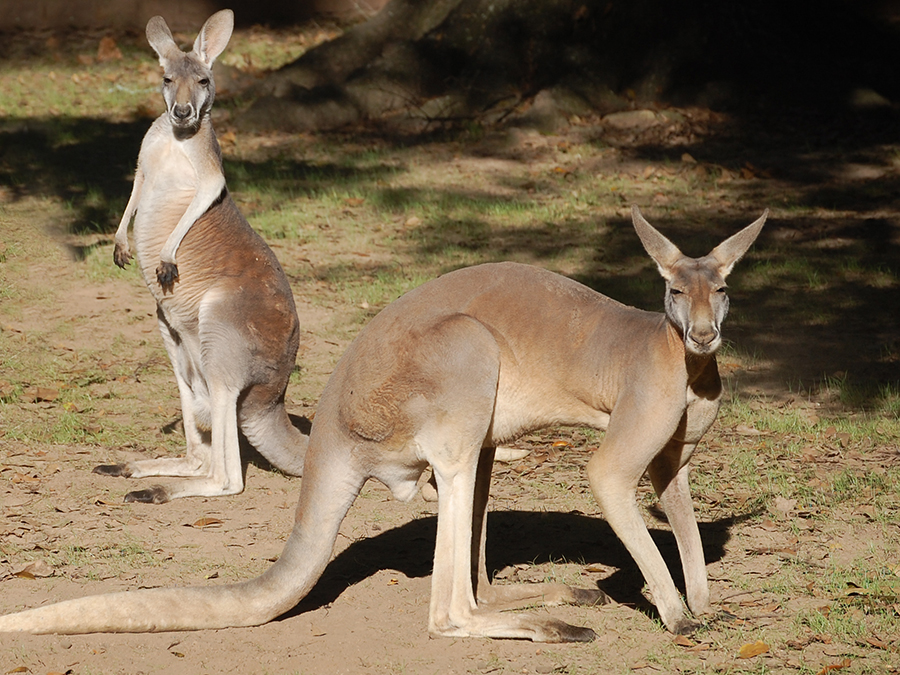
RANGE Australia
HABITAT Grassland, open shrub and lightly wooded plains
DIET Grass, herbs, leaves and bark of low shrubs
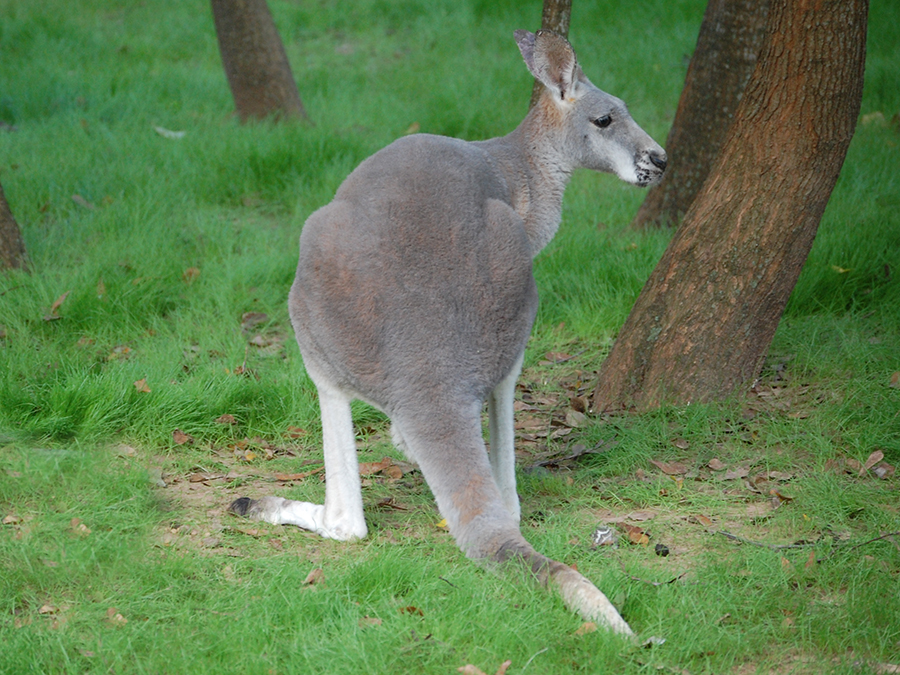
The red kangaroo is the world's largest marsupial. Powerful muscles in the kangaroo's legs enable it to jump as far as 30 feet in one leap.
Accustomed to dry conditions, they can go for long periods without drinking, gaining moisture from the plants they consume. The animals can pant and sweat for cooling.
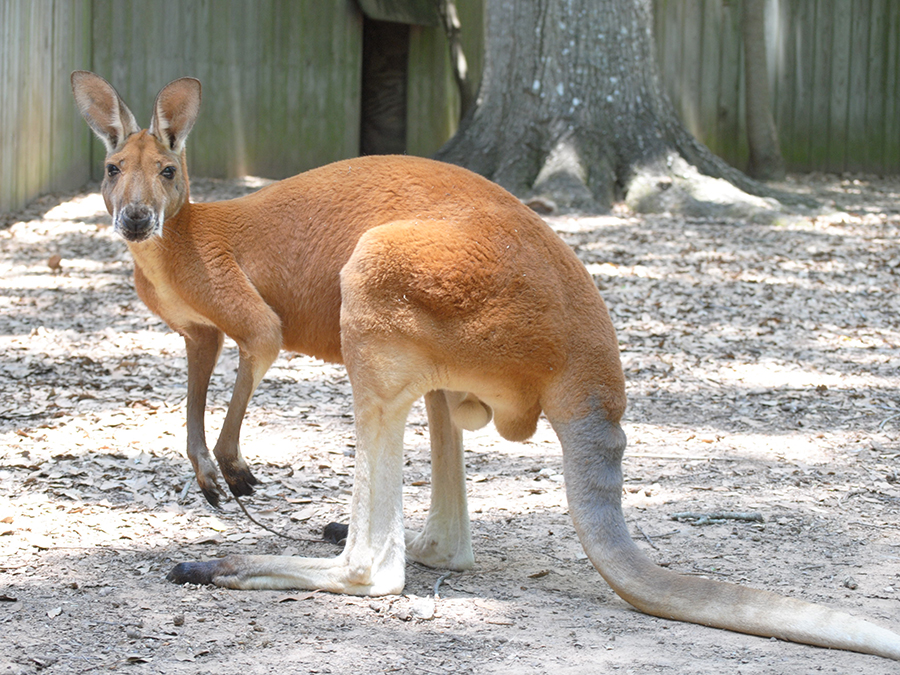
Tapered, strong and heavy tails act as a balance and rudder when leaping. The front legs supports the animal's body as the rear legs move forward when grazing. It also acts as a third leg while sitting and can support the entire body weight.
Over short distances, the species can move as fast as 35 miles per hour.
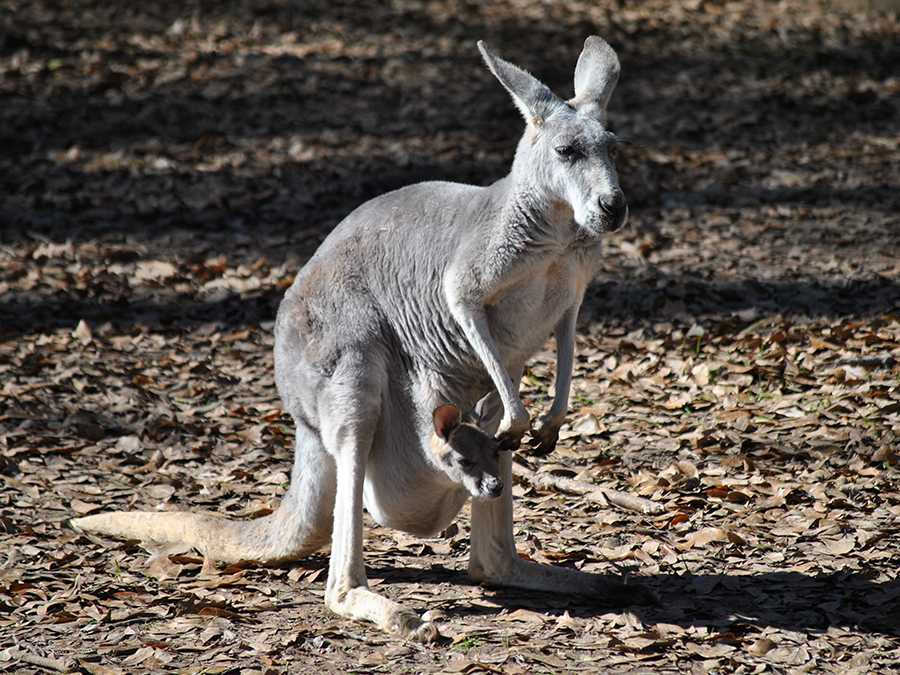
The young, called joeys, weigh less than an ounce at birth and are about the size of a jellybean. They remain exclusively in the mother's pouch for several months as they continue to grow.
Once they've developed sufficiently to leave the pouch, joeys continue to return for feedings and security until they're nearly a year in age.
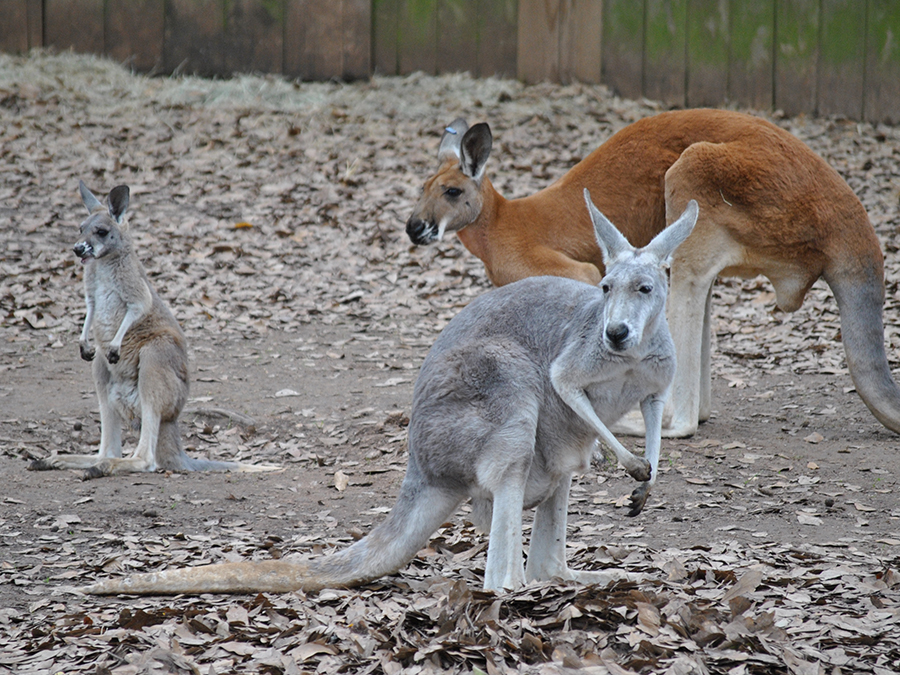
The red kangaroo population is currently stable. This species is present in many protected areas, and harvesting of the species is regulated.